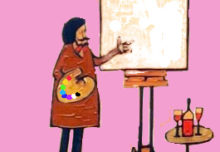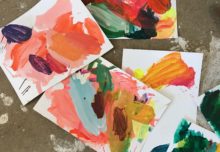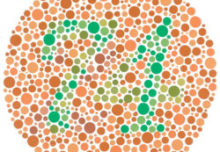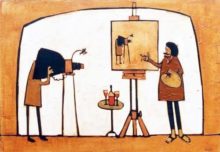Doodles are visual evidence of thought happenings.
If you have an artist inside you maybe you doodle when you have pen or pencil and paper available. I know I do.
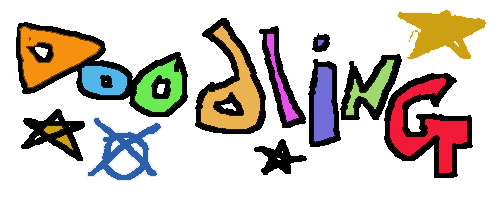
DOODLING
I scribble as well. Maybe that is where your doodles are made up with words. Doodling or scribbling is a super way of exercising the brain. It can be just you and a bit of paper, or a computer screen, or a bit of chalk on the wall.
A few years ago I registered myself the website domains … scribbledoodle.co.uk and doodlescribble.co.uk and the .com versions.
I was surprised that no-one had already bagged them. I haven’t done anything with them yet.
Doodling and scribbling is enjoyable and can lead to further creativity that can be shared. And according to Time Magazine they help you remember things. This is because part of your mind is concentrating while another part has to wait for a while.
Quote from Time Magazine…
‘In a delightful new study, which will be published in the journal Applied Cognitive Psychology, psychologist Jackie Andrade of the University of Plymouth in southern England showed that doodlers actually remember more than non-doodlers when asked to retain tediously delivered information, like, say, during a boring meeting or a lecture.
Why does doodling aid memory? Andrade offers several theories, but the most persuasive is that when you doodle, you don’t daydream. Daydreaming may seem absentminded and pointless, but it actually demands a lot of the brain’s processing power. You start daydreaming about a vacation, which leads you to think about potential destinations, how you would pay for the trip, whether you could get the flight upgraded, how you might score a bigger hotel room. These cognitions require what psychologists call “executive functioning” — for example, planning for the future and comparing costs and benefits.
Doodling, in contrast, requires very few executive resources but just enough cognitive effort to keep you from daydreaming, which — if unchecked — will jump-start activity in cortical networks that will keep you from remembering what’s going on. Doodling forces your brain to expend just enough energy to stop it from daydreaming but not so much that you don’t pay attention.
So the next time you’re doodling during a meeting — or twirling a pencil or checking the underside of the table for gum — and you hear that familiar admonition (“Are we bothering you?”), you can tell the boss with confidence that you’ve been paying attention to every word.’
More information found on the Internet…
www.fastcompany.com/90133438/science-doodling-has-real-benefits-for-the-brain
‘To test the impact of making art on the brain, Girija Kaimal, an assistant professor in the College of Nursing and Health Professions at Drexel, used medical scanning technology to observe blood flow in people’s brains when they doodle and draw. Twenty-six participants wore headbands with functional near-infrared spectroscopy (fNIRS) technology–which measures the flow of blood using light rays–while coloring a geometric pattern, doodling on a piece of paper marked with a circle, and drawing whatever they desired. The participants, some artists, some not, completed each activity for three minutes with breaks in between. The results were published in the journal The Arts in Psychotherapy.
Kaimal and her team found that there was increased blood flow to the area of the prefrontal cortex related to feelings of reward when the participants were creating art versus the rest periods–similar to what happens when you laugh or indulge in a chocolate bar, both of which stimulate the same reward circuit in the brain. There were small differences between each type of art making, with doodling causing the most increase in blood flow and coloring the least, though it was not statistically significant. Kaimal hypothesizes that the increased blood flow is due to an inherent pleasure in making art.
“They indicate an inherent potential for evoking positive emotions through art making—and doodling especially. Doodling is something we all have experience with and might reimagine as a democratizing, skill independent, judgment-free pleasurable activity.”’
And also…
STEVEN HELLER JUL 9, 2015
“While drawing is definitely the artist’s stock and trade, everyone can make doodles, bypassing the kind of refinement demanded of the artist. Drawing, even in a primitive way, often triggers insights and discoveries that aren’t possible through words alone. Just think of all those napkins (or Post-Its) on which million-dollar ideas were sketched out.
For most people, the big question isn’t “when did you start drawing?” but “when did you stop drawing?” Virtually everyone drew and doodled at one point in their lives. For artists and non-artists alike, drawing is about more than art—it’s about the very art of thinking.”
CONCLUSION
So we get a better memory during boring meetings.
Plus feelings of reward like eating chocolate.
And even possible million dollar ideas on a napkin.
Keep doodling and scribbling. It is good for you.
**************************************************

